
 They say pictures say a thousand words. So, have at it!
They say pictures say a thousand words. So, have at it!
This will give me chance to rest my fingers - maybe. Let's try and use this as a tool to determine what the beach means to us, the City's future, the environment and what the next best step is. I am hoping that just posting the pictures will help you formulate your thoughts - I'd be disappointed if they didn't.One other thing from my "safari" - As I was  leaving, a guy in his 20s came up
leaving, a guy in his 20s came up 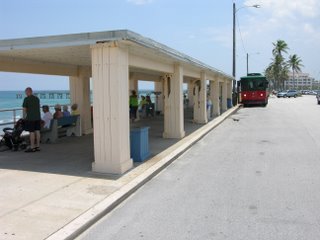 to me, Chris Dion, and said that his car had been broken into and everything had been taken - cleared out. This in broad daylight on a Tuesday at the beach! He wondered if any of my pictures showed his car with anyone around it. He had called the police and they were on their way. When I got home, none of the pictures showed any detail of the parking lot where his car was parked. Dang! So, one of the reasons I tell you this is that if you want to talk about "security" too, that is a fair topic. But, try to keep it related to the Beach.
to me, Chris Dion, and said that his car had been broken into and everything had been taken - cleared out. This in broad daylight on a Tuesday at the beach! He wondered if any of my pictures showed his car with anyone around it. He had called the police and they were on their way. When I got home, none of the pictures showed any detail of the parking lot where his car was parked. Dang! So, one of the reasons I tell you this is that if you want to talk about "security" too, that is a fair topic. But, try to keep it related to the Beach.
Enjoy!
You know, contrary to what may be expected or believed, I am o.k. with the notion of separate Planning and Zoning and Historic Preservation Boards. We really haven't had any significant changes to the way we handle Certificates of Appropriateness (what the HRPB gives out to those who want to change the way a contributing or non-contributing house appears from the street, demolition requests and compatibility of new development within an historic district). It's been 10 years since the initiation of our Historic Preservation Ordinance and with the Master Plan coming down the pike, it is good to examine the process, refine it and make sure it meets the City's needs as we proceed.
In order to make the most informed decision possible, the City Commission should look at all the potential outcomes and unintended consequences, before making a decision to separate board functions. I will introduce some of them here that I have thought of after having put together the letter to the City Commission on the topic. Many of them relate to maintenance and house-keeping of our existing code and what makes up our current districts.
But, before I do that, I also want to state that if we are clear in our purpose that this will improve the quality of decisions made as it relates to the protection of historic resources within the City - then let's do it and do it right.
If we are doing it just so that a select group of CAVE (Citizen's Against Virtually Everything) people can be on a Board - whose job is to say "no" to redevelopment in the City - then we shouldn't do it at all. All that would do is create another warring party within the City's structure and if there is one thing this City needs less of is internal fighting and more proactive steps to really contribute positively to Lake Worth's quality of life. Hopefully, the City would have enough qualified applicants to meet the standards for Certified Local Government status (what's this? - Refer to Frank Palen's letter in previous post)
From City of Lake Worth Code of Ordinances 23.27.03.00. Historic resources preservation board: "To meet the requirements of the certified local government program and to carry out its responsibilities under this article, the membership of the HRPB shall include, to the extent available, members from the disciplines of architecture, architectural history, planning, archeology or related fields. At least two (2) members of the HRPB shall be experienced in the areas of real estate sales, land development, banking or law. The city commission shall determine whether or not the existing members of the HRPB meet the requirements of the certified local government program and may appoint up to two (2) additional members to the HRPB if needed."
By the way, a good on-line resource and access to the complete City of Lake Worth Code of Ordinances can be found at municode.com
So, while we are creating a new Historic Preservation Board, here are some additional things that we can do and should watch out for:
- Part of the Certificate of Appropriateness (COA) requirements for demolition includes the requirement that a concurrent COA application for new development be considered at the same time. This is done to prevent "speculative" demolitions. How will this be handled administratively and be done in coordination with perhaps other review and approval by the Planning and Zoning Board, and/or the City Commission if a zoning or a land use plan change are involved? This is where the time factor and integration of various iterations of alternative plans could result in a less then favorable result.
- At one of our recent meetings, we had a long discussion about the Board's role in levying fines against violators of the historic preservation ordinance. It has been the interpretation of the City Attorney that the Board has the authority to do so. We have to realize that this approach does not allow the City to "lien" the property in order to collect fines. It also doesn't allow for the accumulation of fines over time. Those powers are reserved to actions taken on by the Code Enforcement Special Master. It would be my recommendation that violations to the historic preservation ordinance be handled through the City's established code enforcement procedures. The code should be revised to clearly reflect this.
- We need to perform the following duties as it relates to the maintenance of our six (6) existing historic districts: Update each district to reflect the number of years that have passed since the establishment of a district. If a district was established eight years ago, we need to go through the list of structures, contributing or non-contributing, and determine if any may now be considered contributing due to the fact that they are now 50 years old or older - perhaps they weren't eligible to be contributing due to their age at the time of the original survey.
- We need to "re-check" the original surveys to make sure that the designation of contributing vs. non-contributing structures really is an adequate reflection of the importance to the integrity of the historic district they are in. Many times we have questioned whether or not a structure that was a subject of a COA request was contributing or vice versa. Apparently, some of the original surveys were "drive-bys" and their accuracy is in doubt.
- We need to - immediately, whether we create a new board or not - shore up the designation of each one of our existing districts in light of a technical weakness in the procedure establishing the districts. If we can do it with the revised information, fine. If not, we need to go ahead with this right now.
- We need to get the two districts that we surveyed, bought and paid for, off the shelf that cover the area in the center of the City, north and south of Lake and Lucerne Avenues and west of Dixie Hwy. Previous Commissions indicated that they didn't want to go forward with these designations, with one Commissioner saying the memorable "Let's start the bulldozers". If the Commission's attitude is different now, then it is time to move forward with designation of these districts.
- We need to examine, with factual data, the impact of some of the historic districts extending along our major thoroughfares and whether or not it makes sense to make some adjustment in the boundaries.
- I am in the process of compiling data regarding demolitions and relocations of historic structures, over time, where new development was involved. I think that the Board's actual record is better than its perceived record. I may be wrong, but only the facts will show the reality, not some person's opinion on our record of preserving the City's historic resources.
- If the City is really serious about promoting and identifying its historic districts, then it needs to abide by the following section of the code: (two examples from West Palm Beach shown below)

 23.27.04.11.Standardized street signs. Within two (2) years following official designation of a historic district, the city shall install standardized street signs which identify its boundaries. The design of standardized historic district street signs shall be reviewed and approved by the HRPB prior to manufacture and placement. A possible way to fund this would be to charge a materially significant amount for demolitions of structures.
23.27.04.11.Standardized street signs. Within two (2) years following official designation of a historic district, the city shall install standardized street signs which identify its boundaries. The design of standardized historic district street signs shall be reviewed and approved by the HRPB prior to manufacture and placement. A possible way to fund this would be to charge a materially significant amount for demolitions of structures. - We also need to be serious about the creation of design guidelines and how they will be able to guide compatible and harmonious redevelopment within our historic districts. Right now, we have design guidelines for College Park (only they primarily deal with streeetscape) and we have the Major Thoroughfare Guidelines, which also apply to the Downtown. We need to establish the same guidelines for the other four, soon to be six, historic districts. See code section: 23.27.04.15.Design guidelines. The HRPB may recommend to the city commission supplemental design guidelines which will apply to proposed changes in the exterior appearance of individual landmarks or of buildings or structures in historic districts. The purpose of the design guidelines is to conserve and enhance the special aesthetic, historical and cultural character of the landmark or the historic district. Once adopted by the city commission, these guidelines will supplement the land development regulations applicable to the site or sites within a district. Guidelines may be amended from time to time as provided herein, and may be published in the form of a manual. Guidelines may govern any aspect of physical design, including but not limited to architectural and aesthetic character, site design, site layout or landscape design. If a conflict exists between the standards proposed in the design guidelines and the standards in the underlying zoning district, the standards in the design guidelines shall take precedence.
- "Political advertisement paid for and approved by Wes Blackman for Commissioner – District #3"
-
June 7, 2006Mayor Marc J. Drautz and Lake Worth City Commission7 North Dixie HighwayLake Worth, Florida 33460-3787RE: Separation of Historic Preservation Duties from the Planning and Zoning BoardDear Mayor and Commissioners:At its meeting of May 17, 2006, the members of the Planning and Zoning Board requested that a letter be forwarded to the Commission identifying the following benefits of allowing the Planning and Zoning Board (Board) to continue performing the functions of the Historic Resource Preservation Board (HRPB).1. The Board is currently comprised of residents who live east of Dixie Highway. While this provides a strong representation for people living in the City’s historic districts (since all of the City’s existing historic districts are east of Dixie Highway.), it does not represent the geographic and social diversity of Lake Worth. The Board is in dire need of representation from the western areas of Lake Worth (still true after the recent round of appointments). There is a potential to compound the problem with the establishment of a separate HRPB. Traditionally, the City Commission has found it difficult to appoint a qualified architect to serve on the current combined boards. This vacancy was addressed during the recent round of board appointments by the selection of an architect. However, another architect would also be needed on a separate HRPB in order to maintain the City’s certified local government status. Creation of two separate boards would double the need for architectural expertise which may still be difficult to find.2. One of the more focused opponents to maintaining a combined board has suggested that there is an inherent conflict with the current Board’s functions. Rather than a “conflict” between the functions of a Planning and Zoning Board and a Historic Resources Preservation Board, I think the City continues to see and experience the benefits of having expertise, knowledge and abilities in both areas. This was most recently demonstrated at a recent meeting where we talked about a proposed project within a historical district and were able to discuss all sides of the issues involved. Instead of having a “stand-off” of two opposing sides, a board with combined functions is likely better able to strike a compromise and offer innovative alternatives in a collaborative environment. Although we didn’t “decide” anything at that particular meeting, we were able to discuss all sides of the issue due to the board’s experience in dealing with various competing interests. Is it easy? No! But it is necessary to have this kind of dialog for the City to progress. Separate boards would not only create more conflict, they would extend the procedural and logistical review period for City staff, residents, the two separate boards and the applicant/owner.3. Staffing needs for an additional board should be considered, especially given the budgetary and physical plant constraints that the City faces. The current system is already overburdened and suffers from under-staffing. Another consideration is the time required for a new board to get up to speed and comfortable with its new functions, with appointees having the required backgrounds, interest and abilities for the tasks at hand.4. When the functions of the Planning and Zoning Board were consolidated, and the Historic Resource Preservation Board was established, it was done so that all issues could be heard at one time. This reduced the possibility of a long string of individual meetings with the potential for a “back-and-forth” between various boards as changes are made to a particular project. This was also done at a time when the City was trying to make the process as expeditious as possible in relation to the experience in other communities, but still remaining comprehensive in scope. The attached is a replication of an e-mail sent to the Palm Beach Post in response the article that appeared in the Neighborhood Post insert on May 31. It is from Mr. Frank Palen, Esq. who is the author of the City’s historic preservation code. His response details some of the structural and procedural considerations explored during the time of its creation. If you have questions or need additional information, please do not hesitate to contact me at Sincerely,Wes Blackman, ChairpersonPlanning and Zoning BoardDear Lady, I served on the Lake Worth P&Z Board/HRPB for eight years (1994-2002) and was present at its birth. I’d like to clarify and expand on several points you make in your article of May 31, 2006 in the Neighborhood Post (“Officials Consider Separating Duties of Municipal Board”).You state that “Lake Worth once had separate planning & zoning & historic preservation boards, but they were combined in 1997 to streamline the application process for new construction projects.” That is inaccurate. Before 1996, Lake Worth did have a rudimentary historic preservation ordinance, but it was never implemented, as far as I know, and there was never a separate historic preservation board. Until the new ordinance was adopted, the ordinance was a meaningless symbol. The only action the City had taken in the area of historic preservation was to support applications to the Federal Government prepared by interested citizens to have the Gulfstream Hotel and Old City Hall placed on the National Register. While these actions were certainly welcome, they provided these important buildings with no local regulatory protection. That was another incentive for adopting a new ordinance that would be adequately understood and properly implemented and staffed.The current ordinance was adopted in November 1996 (Ord. 96-29, 11-05-96). We were also able to get the City to create one new staff position for an “Urban Designer” who could administer the preservation code at least part time and perform other planning reviews. The planning director and the urban designer were then able to prepare grant applications for state matching grants to complete the field studies that are necessary precursors to the establishment of historic districts. The first historic districts were not created until 1999 (College Park on 04-20-99 and Old Town on 06-01-99), as a result of these field studies. These grants were also used to prepare Design Guidelines for College Park, Old Town Historic District and Major Thoroughfares, work that has unfortunately stopped as planning resources have been diverted to other matters. It is true that the 1996 Ordinance combined the functions of the P&Z and HRPB boards. That was partly for efficiency reasons, but also to comply with the Federal & State guidelines for “Certified Local Governments” (“CLG”) -- with CLG certification, the City qualified for preferential treatment in the award of state and federal grants and incentives. A non-CLG board would not qualify for these incentives. The CLG requirements also provide for a certain mix of professionals to serve on the Board, which is easier to satisfy if you use the P&Z Board as the core. CLG designation is in fact a backhanded way of the Federal Government mandating that local historic boards be comprised largely of professionals with backgrounds and training relevant to the Board’s work. Local boards comprised of untrained, technically unqualified preservation enthusiasts, even if well intended, do more harm than good in the administration of a highly technical, highly intrusive regulatory program. It’s easy to be an architecture critic, but it takes proper training and education to fairly administer historic preservation regulations. They are among the most complicated in the realm of “zoning”.The merger of boards was also encouraged by the negative example of the independent Delray Beach Preservation Board, which at the time appeared to be a disruptive influence. It was felt that Lake Worth’s historic preservation regulations would work more effectively if they were integrated into the development review process from the beginning, not set apart and made adversarial. It should be noted that consolidation of planning review functions has been a long standing City policy. Not only was the HRPB function combined, but in 1996 the former Planning Board was combined with the former Zoning Board of Appeals (Phil Spinelli was the only holdover) and the former Sign Code Appeals Board. I believe this consolidation of “planning” functions has improved coordination of development reviews and resulted in better decision making overall. The Nuisance Abatement Board was added to P&Z Board functions later. I think that was a mistake. The function of nuisance abatement should have gone to the Special Master. It’s really code enforcement. Consolidation of functions can go too far if it is not properly justified.I don’t think the “problem” is with the composition of the Board; the problem is with the level of public resources devoted to urban planning functions. The level of staffing, in particular, is grossly inadequate for a City of Lake Worth's size and aspirations. Things will not improve by adding more “Planning Pooh-Bahs”. We need more well trained processionals who can do the hard and often tedious work these sophisticated regulatory ordinances require.ThanksFrank Palen


 leaving, a guy in his 20s came up
leaving, a guy in his 20s came up  to me, Chris Dion, and said that his car had been broken into and everything had been taken - cleared out. This in broad daylight on a Tuesday at the beach! He wondered if any of my pictures showed his car with anyone around it. He had called the police and they were on their way. When I got home, none of the pictures showed any detail of the parking lot where his car was parked. Dang! So, one of the reasons I tell you this is that if you want to talk about "security" too, that is a fair topic. But, try to keep it related to the Beach.
to me, Chris Dion, and said that his car had been broken into and everything had been taken - cleared out. This in broad daylight on a Tuesday at the beach! He wondered if any of my pictures showed his car with anyone around it. He had called the police and they were on their way. When I got home, none of the pictures showed any detail of the parking lot where his car was parked. Dang! So, one of the reasons I tell you this is that if you want to talk about "security" too, that is a fair topic. But, try to keep it related to the Beach.




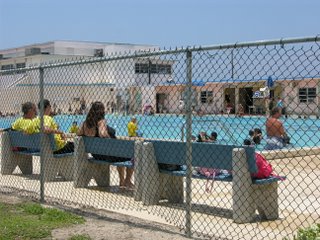
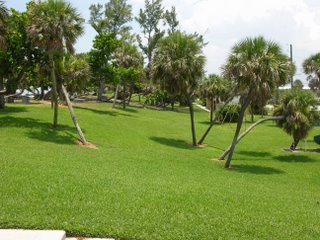

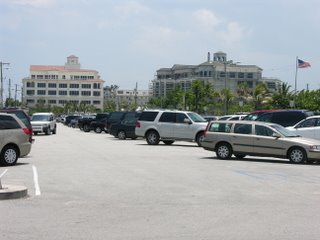
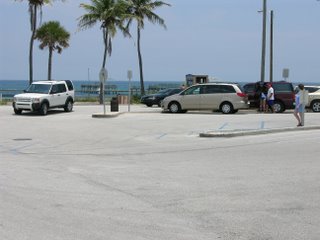

















![Dr. W. H. Cotton’s ode: “Oh, My Lake Worth, Florida!” [circa 1920].](https://blogger.googleusercontent.com/img/b/R29vZ2xl/AVvXsEjUL75cv6zJQFjX15ojOIIz9AjnbqH4asHJTYSDhnGnYr7rJZRha1NcNTirj2xPcId158vkz5Hw-wXgOfrlztj8Zr8jLFFCfuEN6PyV44ZlpMRmJ68xbtFL9vzxNiG7xDs_HJvm/s1600/LakeWorthPioneers.JPG)





